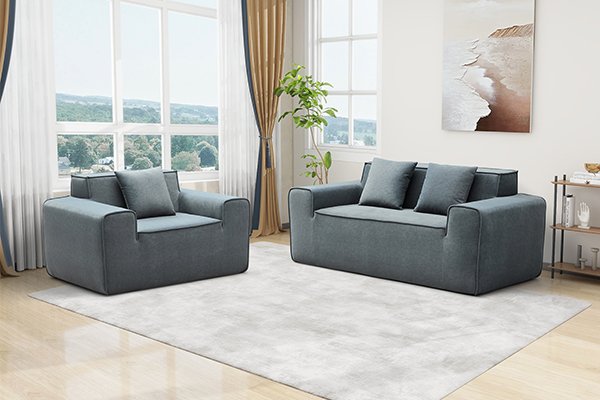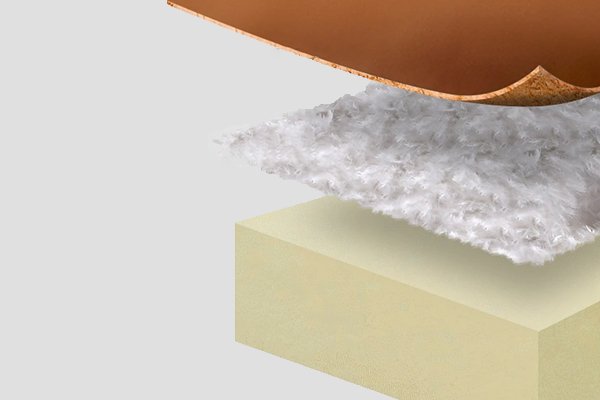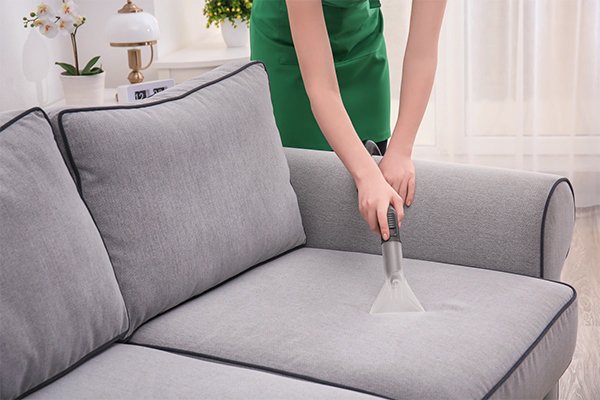
Choosing a sofa is never as simple as it seems. We all want something that’s comfortable, stylish, and most importantly, durable. But what happens when your sofa loses its shape?
To select a sofa that doesn’t lose its shape, you need to consider materials, construction, and maintenance. Sofas made with high-quality foam, strong spring systems, and solid frame structures will ensure longevity and maintain their form for years.
In this article, I’ll guide you through the process of choosing a sofa that stays in perfect shape, whether you’re purchasing online or visiting your local furniture store. Let's explore the key factors you should look for in a sofa to avoid it sagging or losing its structure.
How do materials affect sofa shape retention?

The material of your sofa plays a massive role in how well it holds its shape. Whether it’s foam, fabric, or the frame itself, each component affects the sofa’s longevity and comfort.
Materials such as high-density foam and durable fabrics contribute significantly to shape retention. Sofas with poor-quality stuffing or weak upholstery will lose their form quickly, leading to sagging cushions and an overall worn-out look.
Best Cushion Fillings for Shape Retention
| Cushion Type | Pros | Cons |
|---|---|---|
| High-Density Foam | Holds shape well, firm support | Can feel too stiff for some users |
| Memory Foam Blend | Contours to body, retains some shape | Can become too soft over time |
| Feather & Down | Luxurious and soft | Requires regular fluffing to maintain shape |
| Foam Wrapped with Fiber | Best of both worlds – supportive yet soft | Needs occasional reshaping |
If longevity is your priority, opt for high-density foam or foam-wrapped fiber cushions. These options provide firm yet comfortable seating without losing shape over time.
Why is the sofa frame crucial for durability?
You wouldn’t build a house on a weak foundation, right? The same logic applies to sofas. A solid frame is essential for maintaining shape and structural integrity.
A high-quality sofa frame should be made from kiln-dried hardwood like oak, beech, or maple. Avoid cheaper alternatives like MDF or particleboard, which can warp and break over time.
Best Frame Materials for a Long-Lasting Sofa
| Frame Material | Durability | Recommendation |
|---|---|---|
| Kiln-Dried Hardwood | High | Best choice for longevity |
| Plywood (at least 7-9 layers) | Medium | Acceptable for budget-friendly options |
| MDF/Particleboard | Low | Avoid, as it weakens over time |
A strong frame combined with reinforced joints (such as dowels, corner blocks, or metal brackets) will ensure your sofa remains sturdy and retains its shape.
What role do springs play in sofa shape retention?

Springs are the backbone of a sofa’s comfort and support. If they weaken, your sofa will sag, no matter how good the cushions are.
The best sofas use sinuous (S-shaped) or eight-way hand-tied springs, which provide firm support and bounce. Cheap sofas often use webbing or low-gauge springs, leading to sagging and discomfort.New compression sofas that use high-strength individual pocketed springs for the internal frame are also a good choice.
Types of Sofa Spring Systems
| Spring Type | Pros | Cons |
|---|---|---|
| Eight-Way Hand-Tied Springs | Best durability and comfort | Expensive |
| Sinuous Springs (S-Shaped) | Good support and longevity | Less expensive than hand-tied |
| Webbing | Cheap, easy to produce | Prone to sagging and breaking |
For a sofa that maintains its structure, look for sinuous or hand-tied spring systems.
How can you maintain your sofa’s shape over time?

Even the best-built sofa needs care to retain its shape. Here are some simple but effective maintenance tips:
- Fluff and rotate cushions regularly to prevent uneven wear.
- Avoid excessive weight on one area of the sofa, as it can weaken springs and cushions.
- Use armrest covers and throws to prevent fabric wear in high-contact areas.
- Clean upholstery according to the manufacturer’s instructions to prevent dirt buildup, which can degrade fabric and foam.
By following these tips, you can extend the lifespan of your sofa and keep it looking brand new for years.
Conclusion
A sofa that doesn’t lose its shape requires the right materials, strong construction, and proper maintenance. By choosing high-density foam cushions, a solid hardwood frame, and quality springs, you can enjoy a comfortable and long-lasting sofa. Don't forget to care for it regularly to keep it in top shape!
Looking for a high-quality, long-lasting sofa? HSM specializes in compress sofas designed for durability and comfort. Visit www.compresssofa.com for expert recommendations!